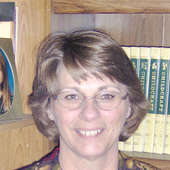Two rooms, each with a purpose
A hospital room.
More to the point, two hospital rooms.
Each brightly lit, decorated in neutral tones, designed to sooth. Each room contains the machines of medicine, heart monitors, oxygen tubes, a headboard filled with mysterious ports and protuberances. The beds are firm and high off the ground, each with hand rails, firmly in place, and ribbed spreads, white over white thin sheets.
Tall bedside tables, equipped with telephones, and the ever-present remote control, capable of lifting and lowering various parts of the bed or of turning on and off the television set -- company if no one else is present-- and most importantly, capable of summoning the nurse in moments of need.
In one room, activity is brisk, businesslike in efficiency. Pain is here, carefully measured and monitored by a band across the abdomen. Leads connect it to a machine that issues a thin sheet of paper, covered by the peaks and valleys that measure the efficacy of the pain.
Yes, this is pain with a purpose. There is tension here, almost palpable, anxious glances at the clock and many soothing voices offering encouragement -- strong and purposeful words that encourage. Adjustments are made. "Are you more comfortable if I rub your back?"
"Here, hold onto my hand. Squeeze when it gets too bad."
And above all else, "breathe, honey breathe. There, that's it. Short and fast. Now, deeply, deeply."
And the brow is wiped, the tears kissed away and lovers exchange a kiss in the midst of pain and fear.
In the other room, there is little activity. Pain is here. It is nearly a physical presence in the room, yet no one monitors it for intensity or duration. This pain has no known purpose and is relentless in its assault. There is no letup, no end -- save one -- in sight. The participants are solemn and for most part, silent.
There are still words of encouragement, gently spoken, with much love. There is anticipation, but it is of a different sort. Strained breathing, cool rags for the forehead, whispers and much touching.
"Mom, hold my hand. Mom, can you feel my hand?"
"Mom, I have a cool rag for your head here. I'm laying it on your forehead. Does that help?"
And silently now, against all logic, "Breathe. Easy now, once more, breath, please breath."
And the brow is wiped, the tears kissed away, and the gift of a lover's kiss, even in the midst of pain and fear.
In the first room, there is purpose. It is definitive. It has a definable name. We await a new creation, another life entering this tumultuous world in a tumultuous fashion.
In the second room, there is purpose. It too is definitive. And it has a much feared, well-defined name. We await the departure of one life from this tumultuous world departing in a tumult of emotion rather than of activity.
In each room, there is pain.
In each room, the pain will stop.
In one room, the pain ends as life begins.
In the other, as a life ends.
In one room is my grandson, Brayden.
In the other, my mother, Francine.
I cannot know the number of days ordained for Brayden, nor the joys, pain and sorrow he will undoubtedly know.
I know the number of days ordained for my mother and I know some of the same joys, pain and sorrow she knew.
How like death may birth be? Knowledge up until the time of birth has been limited, soft and protected.
Sounds have penetrated through a thick filter, light changed to a softened hue through that same filter. No jarring hard surfaces, room to move, freedom to explore the limited space, ever changing, growing smaller and then, one day, tightening.
The pressures felt by the mother in delivery are also felt by the babe. The heart rate increases with the growing pressure and what was once so comfortable is closing in, squeezing, pushing and forcing change. This must be the first taste of fear, this event which marks the first radical change, introducing that which is unknown.
And how like birth may death be? We know this life is not eternal. Mortality is no secret. We face it every day on the obituary page, grateful we're not reading our own biography there.
We face it in moments of terror, during critical illnesses and we know and name the fear. For death too is a change. And yet, there is a small part of us that senses that death is not an end. Perhaps in giving the Breath of Life the Creator also gave eternity. The fear comes from not knowing what eternity holds.
Be easy with the changes. Fear not, for our ends are new beginnings, and the number of our days -- our opportunity to shape our eternity.
"For there is a time for everything, and a season for every activity under heaven; a time to be born and a time to die." Ecclesiastes 3:1, 2
I don't have all the answers, but I know the One who does. Let's walk together for awhile and discover Him together.
Dawn
Originally published Feb. 2, 2000 in the McCook Daily Gazette

